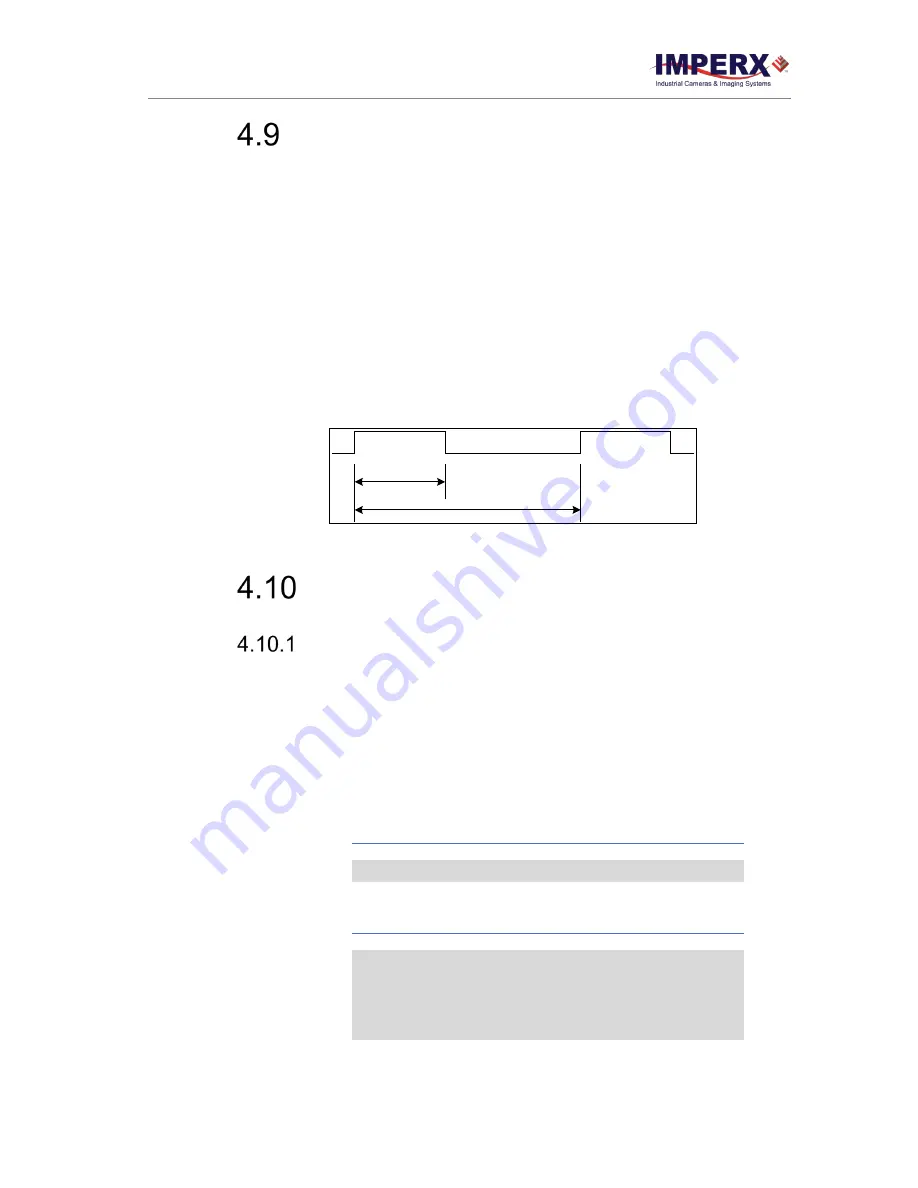
Cheetah Python Cameras User Manual | CoaXPress (CXP) Interface
August 27, 2019
Page
69
of
86
Rev 1.0
Pulse Generator
The camera has a built-in pulse generator that you can program to generate a discrete
sequence of pulses or a continuous sequence (
). You can use the pulse generator
as a trigger signal or map it to one of the outputs (refer to
Set the discrete number of pulses from 1 to 65535 with a step of 1.
You can also set the following options:
•
Granularity
– Indicates the number of clock cycles used for each increment of the
width and the period. Four possible options are available: x1, x10, x100, and
x 1000.
•
Width
– Specifies the amount of time (determined by the granularity) the pulse
remains at a high level before falling to a low level. Minimum value is 1, maximum
is 524,287.
•
Period
–
Indicates the amount of time (also determined by the granularity)
between consecutive pulses. Minimum value is 1; maximum is 1,048,575.
Period
Width
Figure 44:
Internal pulse generator
Input / Output Control
Input / Output Mapping
The camera has two external inputs (1 TTL input and 1 opto-coupled input) and two external
outputs (1 TTL output and 1 opto-coupled switch) wired to the 12-pin HIROSE connector on
the back of the camera. In addition to these inputs and outputs, a CoaXPress input (Trigger
over CXP, Master channel) is also available. You can map CoaXPress input (Trigger over CXP)
or either external input to the Trigger input. You can map camera outputs to: Trigger, Pulse
Generator, Strobe One, or Strobe Two. For each mapped signal, select either active High or
active Low. The following tables show all possible mapping options for the camera inputs
and outputs:
Table 36:
Cheetah Input Mapping
Input Signal
IN1
IN2 CoaXPress input (Master)
Trigger
Table 37:
Cheetah Output Mapping
Output Signal
OUT1
OUT2
Trigger
Pulse Generator
Strobe One
Strobe Two
















































